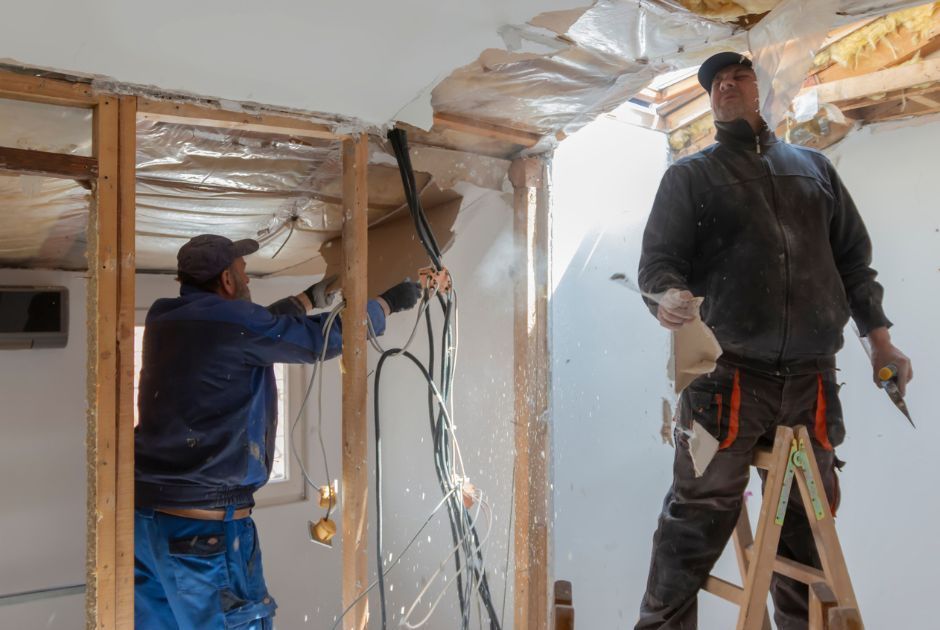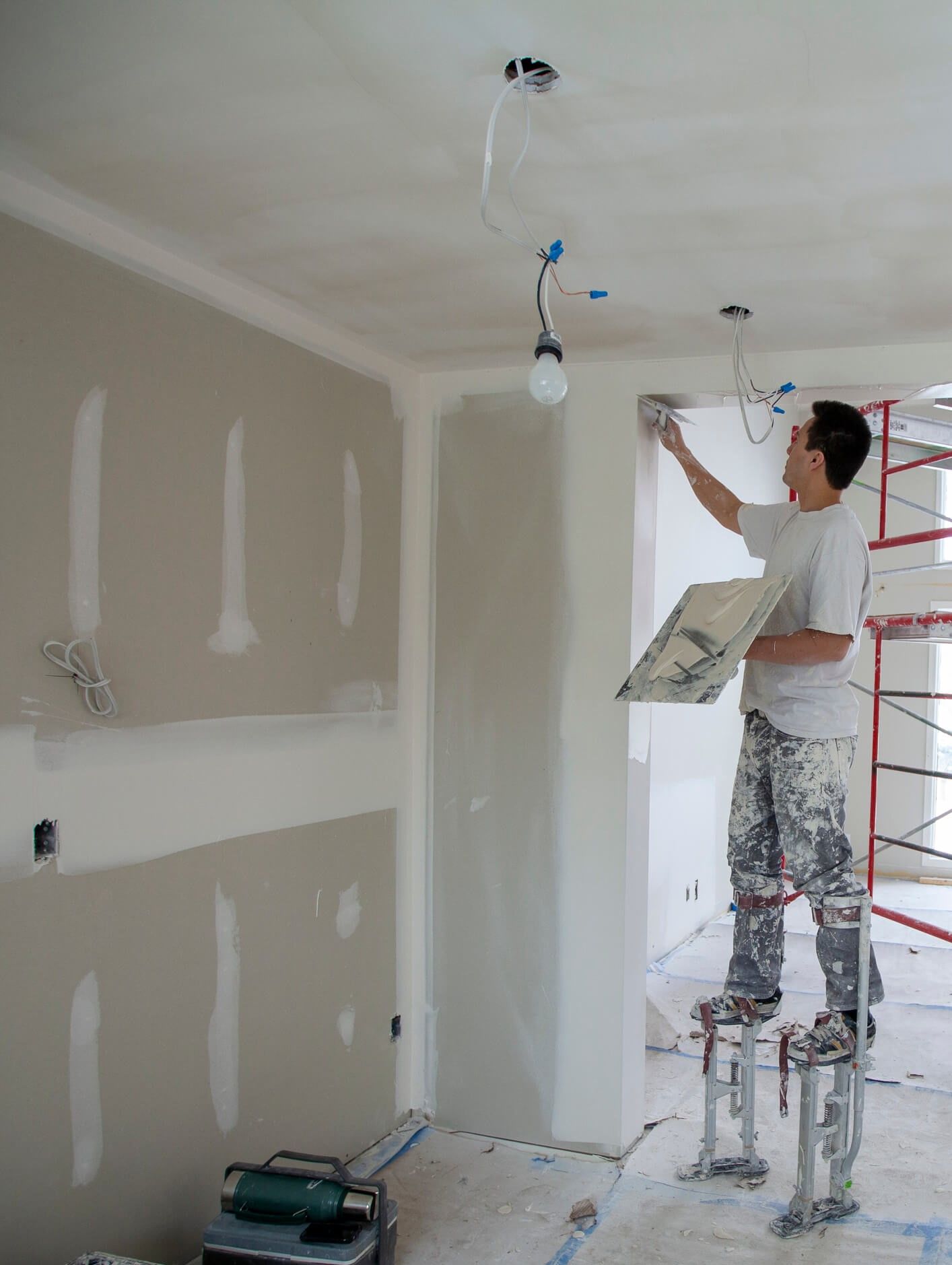Ceiling Repair in Arvada

Textured ceilings can be applied to hide imperfections, and it’s often economical to spray the textured paint when the home is built. It’s common in many homes, but homeowners often find it outdated or unattractive. Plus, it could lead to water damage. Ceiling repairs like these often require extra work and most people don’t want to deal with it themselves.
State Drywall Arvada offers ceiling repair for many situations. Whether you need assistance repairing water damaged drywall or help repairing your popcorn or stipple, we’ve got you covered.
Have you asked yourself: “Is there ceiling repair near me?” The answer is yes!
We offer popcorn ceiling repair and can help with any texture you might have. Please call or fill out the online form to request assistance!
Types of Ceiling Textures
Textured ceilings are often cheaper for builders; they create a finish that looks professional. Drywall is often more expensive because a professional is needed to create a perfectly smooth ceiling. That’s why many builders opt for the spray texture, calling it popcorn, stucco, or stipple.
Many homeowners now want to get rid of that or call us for textured ceiling repair. We can also help with patching ceiling drywall, so there’s no reason not to contact us for assistance.
- Stipple – Stipple was very popular in the 1930s through the 1990s because it added depth and hid imperfections. It uses drywall mud and water and is applied with a paint gun or roller. Overall, it’s common for basements, entrance hallways, and bedrooms, but you might require stucco ceiling repair if it’s looking forlorn!
- Popcorn – Popcorn texture offers an acoustic barrier, but it’s often mixed with Styrofoam. This can easily fall off or discolor with time. When you need to fix popcorn ceiling areas, it’s time to call us for assistance!
- Cottage Cheese – The cottage cheese style also helps prevents echoes in a room, and the “blobs” are often wider. It's easier when it’s time to paint, but it can discolor or become water damaged with time.

Repairing Stipple Ceiling Areas
Most homeowners now don’t choose to add stipple if they’re building a new house, and it’s easy to ask the builder not to include it. However, those who already have texture on their walls and ceilings might require stipple ceiling repair to keep it looking its best.
We can also remove the texture to have a smooth finish on the ceiling. That makes it easier to care for, and painting is effortless.
Some people keep the sprayed texture because it covers the ceiling. However, they are hard to paint and can turn yellow when the sunlight hits them for extended periods. Therefore, you might require plaster ceiling repair, and we can help!
We also offer drywall ceiling repair to get rid of lumps, fix water damage, and more. Don’t be afraid to call us for help!
What We Offer
Whether you’re replacing ceiling drywall or have ceiling damage to fix, we can help. Here are just a few of the services we provide:
- Knockdown ceiling repair
- Bathroom ceiling repair
- Wet ceiling repair
- Drop ceiling repair
- Popcorn ceiling crack repair
- Popcorn ceiling water damage
The Costs Associated with Ceiling Repairs
Fixing the ceiling means paying a professional to get the job done. You might wonder about a ceiling replacement cost, but sometimes there is no need for that. In some cases we don’t have to cut out the entire area and put new drywall in. Instead, we can fix drywall and textured areas.
Many factors influence drywall ceiling repair cost estimates. Do you have a smooth ceiling or is there texture included? Are you planning to cover it with sheetrock or keep the textured ceilings? These things matter when it comes to the price.
You may also wonder about the ceiling repair water damage cost. Leaks should be fixed before we arrive on the scene. We can often handle spots, sagging, and other issues related to this situation. Don’t worry! Our job is to restore your ceiling so that it looks its best again!
Ceiling Repair FAQs
Our Frequently Asked Questions
Why Choose Us
Many people deal with cracks in ceiling drywall and wonder what to do about it. Our team at State Drywall Arvada has the experience and equipment to fill in those areas correctly.
Choose our ceiling repair contractors to help with:
- Ceiling crack repair
- Repair drywall ceiling
- Repair popcorn ceiling water damage
- Tackle texture issues
- Remove texture
- Much more
Ceiling water damage repair is one of our specialties, and we know how to do it efficiently. Our prices are affordable, and we respect your home like it is ours. There’s no reason to try and do it yourself. You run the risk of making more problems and spending too much money!
If you’re ready to get your ceiling repaired, we’re here to help. Please call or fill out our online form to request a quote. We discuss your situation, find out what you need, and keep costs low!




